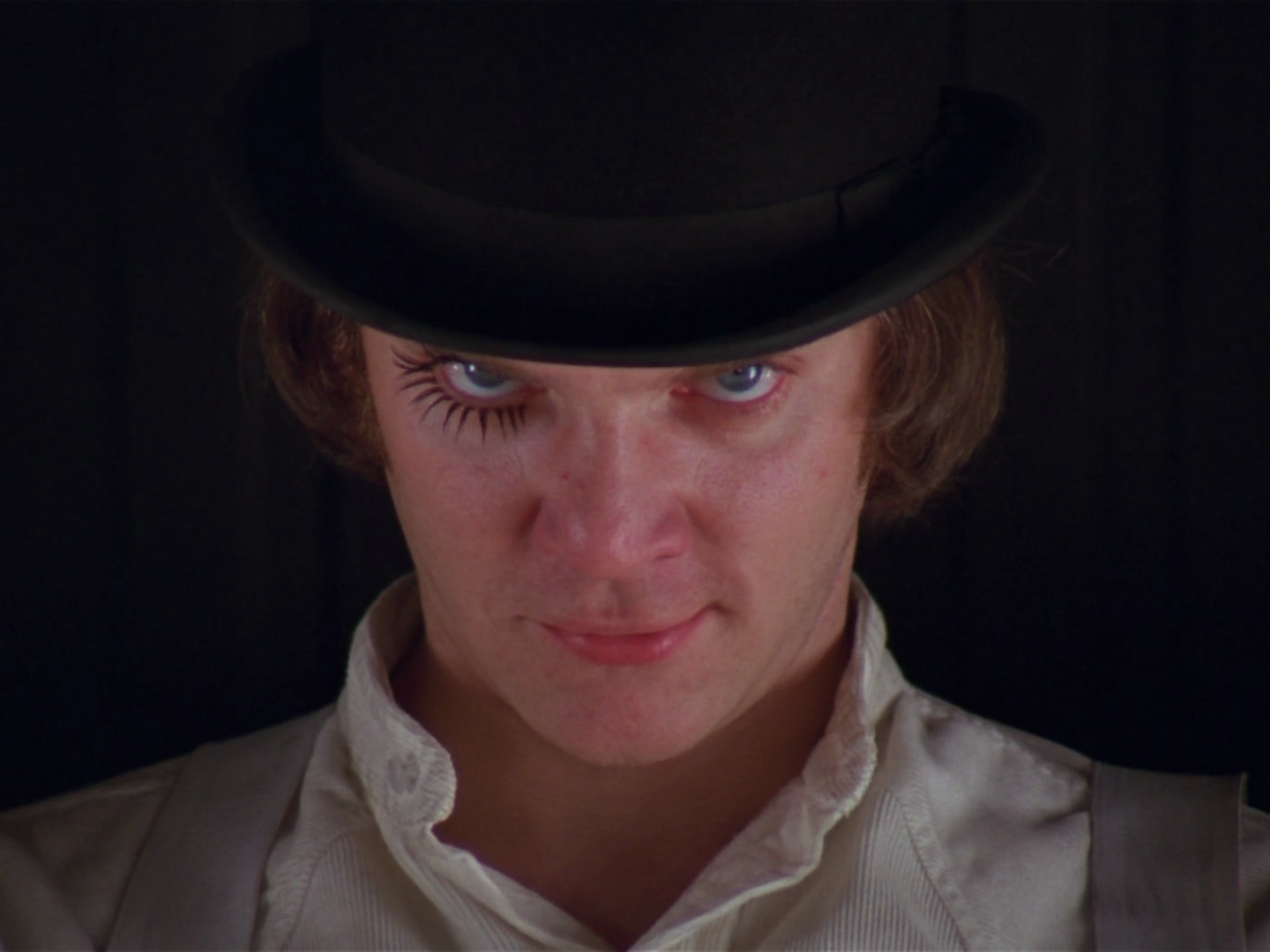
In England, in the near future, the Droogs gang spreads terror through gratuitous acts of violence. Arrested for murder, Alex, their leader, agrees to serve as a guinea pig for a new therapeutic experiment that renders any form of violence unbearable to him. Once released, now as gentle as a lamb, he is driven to suicide by one of his former victims who seeks revenge. Alex survives and is returned to his original state on government orders.
EN
“Stanley Kubrick had put aside his adaptation of Anthony Burgess's novel because he couldn't find the right actor to play Alex, the violent thug. Then he saw Lindsay Anderson's If... (1968), in which I played another victim of institutionalisation. He turned to his wife and said: "We've found our Alex."
I spent nine months with Stanley before we started shooting, watching violent movies every day. They were the most horrendous films: concentration camps, bodies stacked up. He was thinking of using them in the treatment sequence, where Alex is given aversion therapy. One day, I asked Stanley what my friends the "droogs" were going to look like. He said: "What have you got?" I said: "The only thing in my car is my cricket bag." So I put my whites on. He asked what the groin protector was, and when I told him, he said: "Wear it on the outside!" That became the look. In my mind, playing Alex, I always had the idea of Laurence Olivier doing Richard III – and the Nadsat slang the droogs spoke was very Shakespearean.”
Malcolm McDowell, Phil Hoad1
“Kubrick’s A Clockwork Orange is an artful dark comedy of violence, and Malcolm McDowell’s bravura performance as Alex lives large in the collective imagination; but the dazzling colours and fast-paced nature of the film did not appeal to everyone. Pauline Kael of the New Yorker described her unease at the ‘gloating close-ups, bright, hard-edge, third-degree lighting, and abnormally loud voices’, but it is arguably a film designed to disturb its audience. Kubrick encouraged viewers to imagine the garish effects, fillying and tolchocking, and dizzying camera work as a form of dream — a manifestation of the repressed desires and primitive urges that lurk in the minds of all humans. He observed: ‘There may be an argument in support of saying that any kind of violence in films, in fact, serves a useful social purpose by allowing people a means of vicariously freeing themselves from the pent up, aggressive emotions which are better expressed in dreams, or in the dreamlike state of watching a film’. Despite Kubrick’s artistic intentions, the film depicts the violent scenes with brutality, and it rapidly attracted controversy, with typical headlines including ‘Coming Shortly, a Film for None of the Family’, ‘What Good Can This Film Possibly Do?’, and ‘Garbage Disguised as Art is Still Garbage’. Tabloid journalists claimed that the film had been responsible for a number of ‘copycat’ crimes including home invasions, rapes, street beatings and murder. Headlines such as ‘Hunt for Clockwork Orange Sex Gang’ began to appear in the press in 1972.”
The International Anthony Burgess Foundation2
- 1Malcolm McDowell, Phil Hoad, "How we made A Clockwork Orange," theguardian.com, 2 April 2019.
- 2The International Anthony Burgess Foundation, "A Clockwork Orange on film," anthonyburgess.org.
NL
“In het Frans Positif (maart ‘72) lees ik van Jean-Loup Bourget de volgende uitspraak : « Je n’envisage pas ici le point de vue du spectateur qui sympathise avec Alex et s'identifie à lui. C’est bien évidemment le cas d'une bonne partie du public jeune et masculin. Leur cas est grave, puis qu'ils sont insensibles à l'ironie fondamentale du film ». Een naïeve uitspraak omdat hier de kern van het bioskoop-gebeuren A Clockwork Orange genaamd (en mischien wel van het huidige bioskoopgebeuren in zijn geheel) wordt aangeraakt, maar niet meteen het uitgangspunt wordt van de appreciatie van de film. Bourget neemt een objectief, sexueel, leeftijdsloos, esthetiserend standpunt in. Een standpunt volledig abstrakt en kunstmatig. Nee laten we dringend alle kaarten op [tafel] gooien en onze identiteit in het psychodrama onder ogen zien.
Mijn wantrouwen vind ik bevestigd in een tekst van Christopher Ricks (New York Review Of Books, 6 april '72) waar hij ondermeer stelt: "The real accusation against the film is certainly not that it is too violent, but that it is not violent enough; more specifically, that with cunning selectivity it sets itself to minimize both Alex, violence and his delight in it". Wat de kritiek als smaakvolle, barokke bewerking van het geweld interpreteert (ironisering, vervreemdingseffect, enz), is selectief gebeurd ten voordele van de hoodfiguren. Identificatie met Alex zit voor een jong, mannelijk publiek in de film zelf ingebouwd. Meteen is ook de problematiek van de film vertekend, is de "oplossing" van het gestelde probleem reeds in de premissen gegeven. [...] En dan het gestelde probleem van de film: de gewelddadigheid.”
Dirk Lauwaert1
- 1Dirk Lauwaert, "A Clockwork Orange," Kunst & Cultuur, 11 mei 1972.

